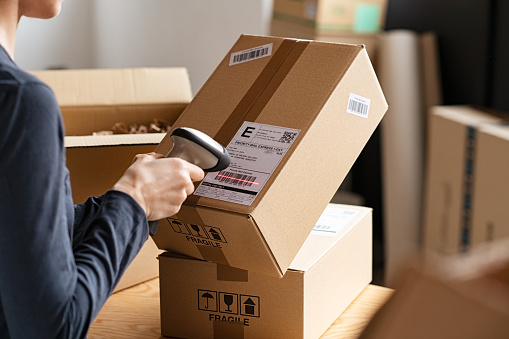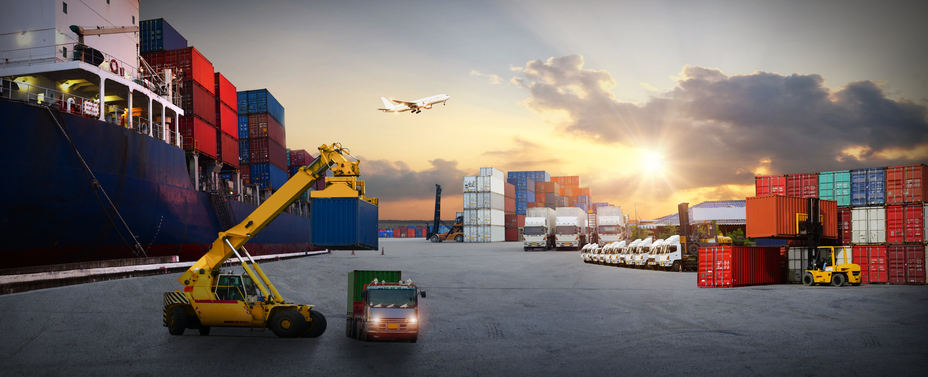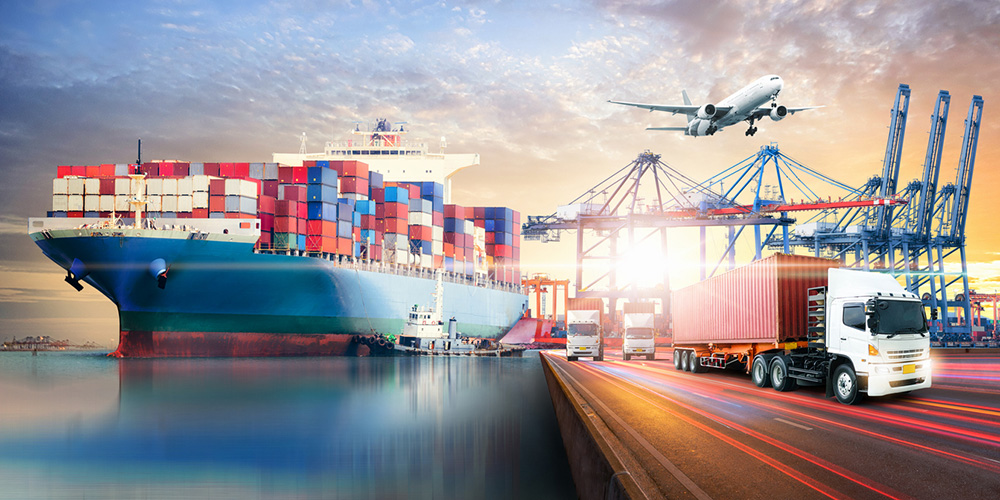Transportation Management Systems (TMS) play a crucial role in the logistics and supply chain industry, offering innovative solutions to streamline transportation processes and optimize freight movements. Shippers, dealing with parcel and less than truckload (LTL) shipments, can benefit significantly from integrating a transportation management system that combines multi-carrier shipping software for parcel and LTL into their operations. Let's explore how a TMS can enhance the efficiency of shippers and lower shipping costs.
What is a Transportation Management System and How Does It Benefit Shippers?
Functions and Features of a TMS
A Transportation Management System is a software system designed to streamline shipping process workflows and manage transportation operations, including shipping price comparison between carriers and services, carrier selection, shipment optimization, document management, and freight management. TMS software provides users with the tools to streamline shipping process workflow, increase visibility, and enhance decision-making capabilities.
Benefits of Implementing a TMS for Shippers
Small and medium-sized businesses that utilize a transportation management system experience numerous benefits, including cost savings, improved efficiency, and enhanced customer service.
By streamlining shipping process workflows, a TMS can significantly improve shipping cycle times. It achieves this by automating tasks such as order processing, carrier selection, and shipment tracking. Comparing rates and services between carriers like Fedex, USPS, and UPS, as well as between LTL carriers such as SAIA, Fedex Freight, Southeastern Freight Lines, Estes, AAA Cooper and more allows shippers to identify the most cost-effective and efficient options for each shipment. This comprehensive comparison reduces transportation costs, optimizes freight movements, and ensures timely deliveries.
The complex pricing structure of less than truckload (LTL) shipments alone can be overwhelming, but a TMS adds intelligent automation and networking capabilities that save you time and money. By incorporating these capabilities, a TMS directly addresses the intricacies of LTL pricing. It simplifies the process through automated comparisons and selections, ensuring you always get the best rates without the hassle of manual calculations.
In essence, a TMS not only streamlines the entire shipping process but also demystifies the often-confusing LTL pricing landscape. This dual functionality of improving workflow efficiency while managing complex pricing structures makes a TMS an invaluable tool for modern shippers.
Enhancing Visibility and Control in Transportation Planning with TMS
A key advantage of using a TMS is the enhanced visibility it provides into transportation processes. Shippers can track shipments in real-time, monitor carrier performance, and proactively address any issues that may arise during transit. This visibility enables shippers to exercise better control over their supply chain and ensure timely deliveries to customers.
How can Shippers Optimize Their Supply Chain with a Transportation Management System?
Optimizing Freight Movement and Carrier Selection
One of the primary functions of a transportation management system is to optimize freight movements by identifying the most cost-effective and efficient carriers for each shipment. By utilizing rate shop shipping features of parcel shipping software, LTL rate shopping, and advanced algorithms, shippers can ensure they select the best carrier for each shipment, reducing transportation costs and improving delivery times.
Additionally, a TMS helps improve shipping process flows by automating key tasks such as order processing, label generation, and shipment tracking. This automation reduces manual errors, speeds up processing times, and ensures accurate data flows, resulting in a more streamlined and efficient shipping operation overall.
Utilizing Real-time Analytics and Data for Improved Decision Making
Real-time analytics provided by a TMS enable shippers to access critical data regarding their transportation operations. By analyzing this data, shippers can identify trends, spot inefficiencies, and make data-driven decisions to optimize their supply chain and improve overall efficiency. These insights help in forecasting demand, adjusting shipping strategies, and enhancing route planning. Moreover, real-time analytics allow for proactive issue resolution, ensuring smoother operations and timely deliveries. Ultimately, leveraging these analytics leads to a more responsive and agile supply chain, capable of adapting to changing market conditions and customer demands.
Integration with ERP, eCommerce Platforms, and Order Management Systems for Seamless Operations
Integrating a TMS with Enterprise Resource Planning (ERP), eCommerce platforms, and Order Management Systems is essential for achieving seamless operations. By connecting these systems, shippers can automate processes, reduce manual errors, and ensure accurate data flows throughout the supply chain. Additionally, integrating a TMS with eCommerce platforms such as Shopify, BigCommerce, eBay, Amazon, Walmart.com and others enhances order fulfillment efficiency. This integration allows for real-time synchronization of orders, automated shipping label generation, shipment status, and streamlined inventory management, resulting in faster processing times and improved customer satisfaction.
What is the Future of Transportation Management Systems in Logistics?
Advancements in TMS Software and Technology
The future of transportation management systems lies in continual advancements in software and technology. Modern transportation management systems are incorporating artificial intelligence (AI), machine learning, predictive analytics, and blockchain technology to offer more sophisticated solutions for supply chain planning and optimization. AI and machine learning enable TMS to learn from historical data, predict potential disruptions, and recommend optimal routing and carrier selection. Predictive analytics provide shippers with actionable insights to anticipate demand fluctuations, manage inventory levels, and optimize delivery schedules.
Additionally, blockchain technology will likely enhance the security, transparency, and efficiency of TMS by providing immutable records of transactions, improving payment processes, and ensuring accurate tracking of goods throughout the supply chain. These advancements collectively drive greater efficiency, reliability, and cost-effectiveness in transportation management.
Role of TMS in Supply Chain Planning and Optimization
Transportation Management Systems are becoming central to supply chain planning and optimization efforts. By providing comprehensive tools for managing transportation processes, TMS software helps shippers enhance efficiency, reduce costs, and improve overall supply chain performance. These systems facilitate real-time tracking, route optimization, and automated carrier selection, allowing shippers to respond quickly to changing conditions and demands. Additionally, TMS software integrates seamlessly with other supply chain technologies, such as Warehouse Management Systems (WMS) and Enterprise Resource Planning (ERP) systems, ensuring accurate and efficient data flow. This integration results in better inventory management, streamlined operations, and superior customer service, making TMS an indispensable component of modern logistics.
Cloud-Based TMS Solutions and Their Impact on the Industry
Cloud-based TMS solutions are gaining popularity due to their scalability, flexibility, and cost-effectiveness. By leveraging cloud technology, shippers can access TMS functionalities from anywhere, facilitating collaboration with logistics providers and ensuring seamless operations.
How Do Parcel Shippers and LTL Shippers Benefit from Shipping Optimization?
Using Multi-Carrier Shipping Software for Efficient LTL Shipments and Parcel Shipping Optimization
Companies that are both parcel shippers and Less than truckload (LTL) shippers can optimize their parcel cost and LTL cost by utilizing multi-carrier shipping software integrated with TMS technology. This solution allows shippers to compare shipping rates and services across multiple carriers, such as FedEx, USPS, UPS, SAIA, FedEx Freight, Southeastern Freight Lines, AAA Cooper, and others less-than-truckload carriers. By comparing LTL and parcel shipping options, companies can ensure they are securing the lowest possible costs for each shipment. This is especially beneficial when deciding whether a heavy parcel shipment might be more cost-effective to ship via LTL or vice versa. This comprehensive comparison and selection process streamlines the shipping process workflows, resulting in significant cost savings and enhanced efficiency.
E-commerce Shipping Solutions Enabled by TMS Technologies
E-commerce businesses can significantly benefit from TMS technologies by leveraging automated shipping solutions that enhance order fulfillment processes and improve customer satisfaction. By integrating TMS with e-commerce platforms such as Shopify, BigCommerce, eBay, Amazon, and Walmart.com, shippers can provide accurate shipping quotes, track orders in real-time, generate return shipping labels, and streamline their shipping operations. This integration ensures seamless data flow and synchronization between the transport management systems and e-commerce systems, reducing manual errors and speeding up processing times. As a result, businesses can offer faster and more reliable shipping options, ultimately boosting customer satisfaction and loyalty.
Maximizing Cost Savings and Efficiency Through LTL TMS Software
Utilizing LTL TMS software enables shippers to maximize cost savings and operational efficiency by optimizing load planning, consolidating shipments, and reducing transportation expenses. With features like route optimization and freight consolidation, shippers can achieve significant cost savings while improving delivery speed.
Why Shippers Should Explore Utilizing a 3PL for Integrated TMS Services?
Improving Customer Service and Satisfaction with TMS Solutions
Utilizing a 3PL to provide integrated transport management services helps shippers enhance customer service by ensuring on-time deliveries, providing shipment tracking capabilities, and offering accurate delivery estimates. With the support of a dedicated team for IT and shipping support, shippers can address any issues promptly, improving the overall shipping experience and boosting customer satisfaction and loyalty.
Enhancing Carrier Management and Relationships through 3PL TMS Integration
Integrating a transportation management system provided by a 3PL enables shippers to build stronger relationships with carriers and reduce costs by leveraging the 3PL’s pricing power and national relationships. This centralized approach not only streamlines communications but also enhances the value shippers receive through established carrier partnerships.
By utilizing the 3PL’s extensive network and expertise, shippers can ensure consistent service quality and more efficient operations, ultimately leading to improved collaboration and optimized transportation management.
Streamlining Shipping Process Workflows and Reducing Operational Costs
One of the key benefits of utilizing a 3PL for TMS services is the ability to streamline shipping process flows and reduce operational costs. The 3PL’s buying power can secure better pricing from carriers, while their integrated TMS automates manual tasks, optimizes routes, streamlines document creation, and enhances shipment visibility. This results in greater efficiency, lower transportation expenses, and overall business success for shippers.
Discover the Best Shipper for E-Commerce and B2B with Visigistics
Unlock the full potential of your shipping operations with Visigistics! Whether you're shipping parcels or managing LTL freight, our cutting-edge TMS solutions are designed to streamline your logistics, reduce costs, and enhance efficiency. As the best shipper for e-commerce and B2B shipping, we understand the unique challenges of online retail and offer tailored solutions to meet your needs.
Leverage our expertise, national relationships, and powerful technology to take your supply chain to the next level. Contact Visigistics today to discover how our TMS can transform your shipping processes and boost your bottom line. Don't wait—optimize your logistics with Visigistics now with our complete shipping solutions for business!
Frequently Asked Questions:
Q: What are the benefits of using a Transportation Management System?
A: A Transportation Management System provides numerous benefits, including cost savings, improved efficiency, and enhanced customer service. By optimizing freight movements and utilizing real-time analytics, shippers can streamline their logistics operations and improve their overall supply chain management.
Q: How does a TMS benefit supply chain management?
A: A TMS plays a crucial role in supply chain management by enhancing visibility, improving carrier selection, and optimizing transportation operations. It helps companies manage their logistics more effectively, leading to better decision-making and increased operational efficiency.
Moreover, a solid TMS makes it much easier to communicate these details to your customers by automating notifications and providing real-time tracking for orders. Customer Communication is streamlined, ensuring that customers are consistently informed without manual intervention, enhancing their overall experience. Real-time Tracking offers customers up-to-the-minute updates on their orders, improving transparency and trust.
By integrating these advanced features, companies not only see internal benefits but also significantly boost customer service. The automation of notifications and real-time tracking directly address customer needs, making the logistics process more transparent and reliable.
Q: What is the future of TMS in the logistics industry?
A: The future of TMS in the logistics industry includes advancements in software and technology, such as artificial intelligence, machine learning, and predictive analytics. These innovations will further enhance supply chain planning and optimization, making TMS a central tool in logistics management.
Q: What are the key functions of a Transportation Management System?
A: Key functions of a TMS include carrier selection, shipment optimization, and freight management. It also provides real-time analytics and integrates with ERP and Order Management Systems, helping companies manage their transportation and logistics operations more efficiently.
Q: How can companies benefit from investing in a TMS?
A: Companies can benefit from investing in a TMS by improving customer service, enhancing carrier relationships, and reducing operational costs. A TMS provides tools to streamline transportation processes, optimize routes, and automate manual tasks, leading to increased efficiency and cost savings.
Q: What are the advantages of using a cloud-based Transportation Management System?
A: Cloud-based TMS solutions offer scalability, flexibility, and cost-effectiveness. They allow shippers to access TMS functionalities from anywhere, facilitating collaboration with logistics service providers and ensuring seamless operations across the supply chain.
Q: How do transportation management 3PLs help in setting up a TMS solution for their customers?
A: Third-party logistics providers (3PLs) assist in setting up TMS solutions by offering expertise, customized implementation, and ongoing support. They help companies optimize their transportation operations, integrate with existing systems, and ensure the TMS aligns with their specific logistics needs.
Q: How does a TMS integrate with existing warehouse management systems?
A: A TMS integrates seamlessly with existing warehouse management systems (WMS) to ensure smooth operations across the entire logistics network. This integration helps companies manage inventory more efficiently, optimize transportation planning and execution, and improve overall supply chain visibility. Typically integrations are done using real-time APIs or ODBC connections if APIs are not available.
Q: What are the main execution features of a TMS?
A: The main execution features of a TMS include real-time tracking, route optimization, and automated carrier selection. These features help companies optimize their transportation operations, reduce costs, and enhance delivery performance.
Q: How can TMS software options help companies with reverse logistics?
A: TMS software options provide specialized tools for managing reverse logistics, such as returns and exchanges. By streamlining these processes such as generating pre-printed return labels, companies can reduce costs, improve customer satisfaction, and ensure efficient handling of returned goods.
Q: What role does a TMS play in multimodal and intermodal transportation?
A: A TMS plays a central role in managing multimodal and intermodal transportation by optimizing the use of different modes of transportation. It helps shippers select the most efficient and cost-effective combinations of transportation methods, enhancing overall logistics management.
Q: How does a TMS support international logistics operations?
A: A TMS supports international logistics operations by providing tools for managing cross-border shipments, compliance with international regulations, and coordination with global carriers. This ensures smooth and efficient international transportation, reducing delays and costs.
Q: How do TMS providers ensure seamless integration with ERP systems?
A: TMS providers ensure seamless integration with ERP systems by offering customizable APIs and support for various data formats. This integration allows for automated data exchange, reducing manual errors and ensuring accurate information flow across the supply chain.
Q: What factors should companies consider when selecting a TMS provider?
A: When selecting a TMS provider, companies should consider factors such as scalability, ease of integration, support services, and the provider’s experience in the logistics industry. Evaluating these factors helps ensure that the chosen TMS meets the specific needs of the business. Also companies must consider if choosing a TMS is something they want to invest in or whether it is something that a 3PL provider might be able to provide as a complete service to lower a company's shipping costs.
Q: How can a TMS help in optimizing transportation activities across the supply chain?
A: A TMS helps optimize transportation activities across the supply chain by providing tools for route planning, carrier selection, and real-time shipment tracking. This ensures efficient and cost-effective transportation, enhancing overall supply chain performance.
But how exactly does a TMS achieve these benefits? Here are some specific ways:
Finding Better Rates Among Carriers:
- The technology makes it easy to identify more cost-effective carrier options, directly reducing transportation costs.
Reducing Freight Expenses:
- Decreasing empty loads and shortening payment cycles are key actions facilitated by a TMS, leading to significant cost savings.
Improving Flow and Efficiency:
- With streamlined operations, goods can flow more easily and efficiently through your supply chain, minimizing delays and disruptions.
Centralized Documentation:
- Having all documentation in one place simplifies the process of finding and sharing information. This results in faster and more accurate billing, further boosting efficiency.
By incorporating these features, a TMS not only optimizes logistics but also ensures a smoother, more cost-effective supply chain operation.
Q: How does parcel shipping software enhance the shipping process for businesses?
A: A Transportation Management System (TMS) integrated with parcel shipping software, significantly enhances the shipping process for businesses by streamlining operations, reducing costs, and improving efficiency. This software allows shippers to compare rates from various carriers like FedEx, USPS, and UPS, ensuring they select the most cost-effective option for each shipment. Additionally, real-time tracking and automated label generation simplify the shipping process, leading to faster order fulfillment and improved customer satisfaction. By leveraging parcel shipping software, businesses can optimize their logistics operations and achieve better overall performance in their supply chain management.
Q: How does a TMS consolidate documentation to improve shipment accuracy and speed?
A: A TMS streamlines the documentation process by centralizing all related information in a single, easily accessible location. This consolidation means that team members no longer need to search through multiple platforms or physical files to find what they need. With all documents in one place, sharing becomes straightforward, reducing the risk of errors and ensuring consistency.
Q: What insights can be gained from the comprehensive reports generated by a TMS?
A Transportation Management System (TMS) offers valuable insights through its comprehensive reports. These reports can reveal detailed information about your shipping activities, such as delivery times, transit routes, and carrier performance. Additionally, they help identify patterns and trends in your logistics operations, highlighting areas where you can streamline processes and reduce costs.
Businesses can also uncover potential opportunities for optimization, such as improving route efficiency, consolidating shipments, or negotiating better rates with carriers. In essence, the data-driven insights from a TMS allow you to make informed decisions, enhance operational efficiency, and improve overall supply chain performance.
Q: What role does a TMS play in providing accurate and immediate shipping timelines to customers?
A Transportation Management System (TMS) is crucial for delivering accurate and immediate shipping timelines to customers. By automating notifications, it streamlines communication, ensuring that updates are sent promptly. Furthermore, a TMS offers real-time tracking, allowing customers to follow their orders every step of the way. This comprehensive visibility not only builds trust but also enhances the customer experience by keeping them informed about their shipments' progress.
Q: Why is it important to have modern technology in the logistics industry?
A: In the logistics industry, the ability to swiftly and efficiently handle challenges as they arise is crucial. Modern technology is essential because it minimizes delays and prevents unexpected issues from turning into significant bottlenecks. Advanced systems can monitor operations in real time, offering immediate solutions to any disruptions. By employing the latest technology, companies can ensure smoother workflows, enhanced productivity, and greater overall reliability.
Q: How has new technology made TMS more accessible and affordable?
A: New technology has revolutionized Transportation Management Systems (TMS), making them more accessible and affordable than ever before. With the advent of user-friendly internet platforms, businesses can now easily implement cloud-based TMS solutions without the need for expensive hardware. This means lower initial costs and minimal maintenance fees, reducing the total cost of ownership.
Moreover, integrating Less-Than-Truckload (LTL) specific features has become straightforward, thanks to seamless data interchange capabilities. This integration allows companies to optimize their shipping routes and costs efficiently. As a result, even small and medium-sized enterprises can take advantage of sophisticated TMS functionalities without breaking the bank. Contact us and learn how we can possibly provide a TMS at no cost to you.
Q: Is it expensive to get a TMS for LTL services?
Obtaining a Transportation Management System (TMS) for Less-than-Truckload (LTL) services doesn't have to break the bank. Modern advancements in technology have made it more affordable and accessible than ever.
Nowadays, you can easily find TMS solutions that fit seamlessly with your current system without incurring major expenses. Many platforms offer specific features designed for LTL services, ensuring smooth data interchange and efficient operations.
At Visigistics, we provide our customers a TMS that can integrate Parcel and LTL shippers with enterprise-level pricing to reduce costs with no capital expenditure or monthly costs. Contact us today to learn more.
What specific TMS solutions does Visigistics offer for small and medium shippers?
Visigistics provides tailored Transport Management System (TMS) solutions specifically designed for small and medium shippers that includes parcel rating, LTL rating, and enterprise rates. This innovative tool allows users to efficiently compare rates, book shipments, track deliveries, and analyze shipping data using their existing carriers, streamlining logistics and improving overall operational efficiency.






